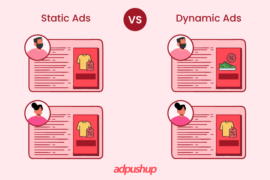Learn what invalid traffic is and discover effective strategies to reduce it. Implement fraud detection systems, filters, and verification methods to combat fraudulent activity and safeguard the integrity of your website and advertising campaigns.
In the realm of digital advertising and marketing, one persistent threat looms large: invalid traffic. Invalid traffic refers to the influx of fraudulent or illegitimate visits to websites, compromising the integrity of data and hindering the accuracy of analytics.
Surprisingly, recent studies have revealed that a staggering 7.9% of all site traffic falls into this category.
Needless to point out now that invalid traffic is a worldwide problem. All publishers are receiving some amount of invalid traffic and clicks on their websites, regardless of your size and your niche.
The truth is that nobody can entirely eliminate this invalid traffic. As a website owner, you still need some bots (like search engine bots) to crawl your website. However, you can certainly work on preventing the bad ones from giving out fake clicks and impressions.
So, how can you effectively reduce invalid traffic and protect your digital assets? In this blog, we will delve into some key strategies and best practices. But first, let’s understand what invalid traffic is.
What is Invalid Traffic?
According to the Google AdSense:
Invalid traffic includes any clicks or impressions that may artificially inflate an advertiser’s costs or a publisher’s earnings. This can be done by mistake or deliberately with the intention of fraud. From the perspective of the advertisers, such traffic doesn’t end up becoming good leads (ultimately not resulting in any revenue), making the impressions and clicks of no value.
What does Invalid Traffic Include?
- Publishers providing impressions and clicks on ads served on their own websites.
- Publishers taking the help of automated tools (click bot, bot farm, and software) to create fake traffic
- Fraudsters using bot traffic to spam web pages and steal users’ data.
What are The Types of Invalid Traffic?
There are mainly two types of invalid traffic:
General Invalid Traffic (GIVT)
GIVT encompasses are relatively easier to detect. Some common examples include:
Search Crawlers
Automated bots employed by search engines to index web content can sometimes generate invalid traffic when they access advertising and marketing websites.
Traffic from Known Data Centers
Traffic originating from data centers that are associated with fraudulent activities or are known for generating invalid traffic falls into this category.
Irregular Patterns
Duplicate clicks or irregular patterns in user behavior, such as suspiciously high click rates or inconsistent navigation, are indicators of GIVT.
Sophisticated Invalid Traffic (SIVT)
SIVT refers to more advanced forms of invalid traffic where fraudsters go to great lengths to mask their fraudulent behavior as legitimate. Some examples of SIVT include:
Incentivized Clicks
Fraudsters may use deceptive tactics, such as offering incentives or rewards, to entice users into clicking on ads artificially.
Misleading User Interface
Fraudulent websites may employ misleading user interfaces that trick users into unintentionally clicking on ads, generating invalid traffic.
Fraudulent Browser Automation
Sophisticated scripts or browser automation techniques can mimic human-like behavior to deceive detection systems, making the invalid traffic appear more genuine.
Both GIVT and SIVT pose significant challenges for publishers, compromising the accuracy of data and the effectiveness of advertising campaigns.
Also Read – Understanding Invalid Activity in AdSense
How Does Invalid Traffic Affect Publishers?
The ramifications of invalid traffic (IVT) on publishers are far-reaching and can significantly impact their operations. Here’s how it affects publishers:
Ad Revenue Loss
Invalid traffic undermines the accuracy of ad impressions, clicks, and conversions, leading to a direct loss in ad revenue. Advertisers may question the legitimacy of the traffic and withhold payment, impacting the publisher’s bottom line.
Publishers’ Inventory Reputation
Next, Inventory reputation is significantly impacted by Invalid Traffic (IVT). Advertisers possess advanced traffic quality detection tools through Demand Side Platforms (DSPs) and ad quality vendors.
When advertisers observe a consistent pattern of high invalid traffic on a website they purchase inventory from, they may opt to lower their bids or blacklist the publisher altogether. The repercussions of IVT on inventory reputation can be substantial.
Account Suspensions
The detrimental effects of Invalid Traffic (IVT) on publishers extend to the suspension of their accounts. Numerous accounts of AdSense and AdX publishers can be found on Google’s support forums, where they express their account suspensions attributed to invalid activity. Google employs a range of techniques to track and prevent IVT throughout its network.
These measures include automated filtering, real-time and near real-time monitoring, manual detection, and reviews, botnet hunting, and as a last resort, account suspensions. As a result, publishers face the risk of losing their accounts as a consequence of IVT.
Decreased User Engagement
Invalid traffic can skew engagement metrics, making it challenging to accurately gauge user behavior and preferences. This hampers publishers’ ability to tailor content and improve user experiences, potentially leading to a decline in user engagement and retention.
Also Read – How to Balance Ad Revenue and User Experience?
Advertiser Dissatisfaction
Lastly, advertisers rely on publishers to deliver genuine and high-quality traffic. When confronted with invalid traffic issues, advertisers may become dissatisfied with the publisher’s performance, leading to strained relationships and a loss of future advertising opportunities.
Now that you know how invalid traffic hurts a publisher, let’s have a look at how to prevent it.
How to Block Invalid Traffic (Tips for Reducing Invalid Traffic)?
Invalid traffic is not good for anyone. Fake impressions and clicks increase the cost of advertisers. And too much non-converting traffic can lead to a decrease in the market value of a publisher’s inventory. Not just that, invalid traffic messes up with the analytical data, making it difficult to plan campaigns on the advertiser end and to forecast inventory on the publisher end.
Hence, when you notice suspicious traffic (like a sudden increase in users or spam comments), it’s best to take that seriously.
Know About Your Traffic and Users
Start by breaking down your audience into segments based on channels, location, device usage, and more. Analytics tools like Google Analytics can help you with the same. Watch out for a sudden fluctuation in the number of users or suspicious user behavior. Next, keep looking at metrics like average session duration and page scroll depth. All visits lasting <1 second and most users not scrolling past at least 10% of page depth are signs of bot/invalid traffic. Being informed is the first step to preventing invalid traffic.
Don’t Purchase Traffic
How is purchasing traffic for your webpage going to do any good? Once, your subscription expires with the traffic provider, you will be down to low/no traffic. Purchased traffic mostly consists of click farms where either computer software or humans are assigned to provide impressions and clicks. This will never be good for your brand. Instead, invest in better content, user experience, and search engine optimization to organically increase traffic.
You ideally want the advertisers (advertisements) on your site to fulfill their goals (getting better leads and conversion). This would eventually benefit you with advertisers willing to pay more for the quality of your site and the conversion that comes with it.
Never Click on Your Own Ads
Never click on your own ads and/or ask your friends/family to click on the same. AdSense has a very strict policy for invalid clicks on ads. Clicks on ads by publishers are easily identifiable by Google (mostly via IP address monitoring). In response to such activities, Google suspends or disables the publisher’s AdSense account.
Remember, the real purpose of ads is conversion and for each genuine click, Google pays you. In case you have clicked on one of your ads by mistake, inform Google as soon as possible. Accidental clicks happen and Google understands that as long as these are within the limit.
Follow Best Practices for Ad Placement
Placing your ads in a way that induces users to click on them by mistake is also considered as fraud. If your ad tags are overlapping content or hidden behind the page elements, then clicks will lead to IVT. Make sure you check that the ads are not disrupting the user experience. Take help from ad viewability best practices, if needed.
Get Your Traffic Vetted by a Third-Party
There are a number of ad fraud detection companies helping publishers combat ad fraud including invalid traffic. Companies like WhiteOps and Pixalate are accredited by Media Rating Council to detect sophisticated invalid traffic (SIVT). These companies help by eliminating the non-human traffic before the site loads (or ad loads) in real-time. Furthermore, by taking the help of a third-party company, you can dodge other fraud like domain spoofing, ad injection, ad viewability issues as well.
AdSense Helps Filter Out Invalid Traffic
Google Analytics makes it easy to filter the invalid traffic out. Here is how you can do it:
- Go to your Analytics account and click on the Admin button.
- Next, go to the View tab and click on View Settings.
- Scroll down to find Bot Filtering option and click on the checkbox, if it’s unchecked.
- Save the settings.
Google Analytics is pretty good at finding and filtering bot traffic. However, it doesn’t guarantee 100% removal of invalid traffic.
What Else Should a Publisher Know?
Elias Terman, vice president of marketing at Distil Networks, explained, “Actually, publishers lose a lot more money than they realize to fraud because they don’t factor in the revenue they lose when fraudsters send bots to visit their sites to create a fraudulent cookies bot audience, and then sell their cookies NHT as readers on the open exchanges. Advertisers allot a budget for this traffic, but it’s the fraudsters, and not the publishers, who collect it.” Given this traffic will lead to no conversions at all, it will become difficult for the advertisers to continuously pour in budgets to your site for the long term.
Advertisers are always on the lookout for means to avoid working with such publishers with invalid traffic.
In the process, they hire ad fraud protection agencies that simply eliminate and/or block publishers with suspicious traffic. In order to avoid ad fraud, there is a cost to be paid to an organization helping you to fight them. What that means is that instead of the total budget being spent on your site, a part of it is now being spent on these fraud prevention companies (ultimately reducing publisher revenue).
Hence, publishers are recommended to comply with the above-mentioned tips to avoid invalid traffic and better ad standards to make the most out of their inventory.
Frequently Asked Questions on Invalid Traffic
Invalid traffic refers to fraudulent or illegitimate visits to websites, often generated by bots or other deceptive means, which can distort data and undermine the effectiveness of advertising campaigns.
An example of invalid traffic is when automated bots generate fake clicks or impressions on ads, artificially inflating engagement metrics and deceiving advertisers.
To stop invalid traffic, implement fraud detection systems and filters to block suspicious traffic sources, while utilizing CAPTCHAs and monitoring analytics to identify and mitigate fraudulent activity. Refer to the above tips for more.

Deepak has a keen eye for detail and a deep understanding of the ad tech landscape. Whether it’s through in-depth articles, thought-provoking insights, or compelling storytelling, he’s dedicated to helping people navigate the complex world of ad tech with the simplicity of his words.



![CTV vs OTT Advertising: Which one is Right Pick for Publishers? + [6 Bonus Strategies] Ott vs Ctv](png/featured-image-270x180.png)




2 Comments
Thanks for the post.. I’m currently facing this issue on my website.. I will try out the Google Analytics bot filtering.
thank you for your valuable content